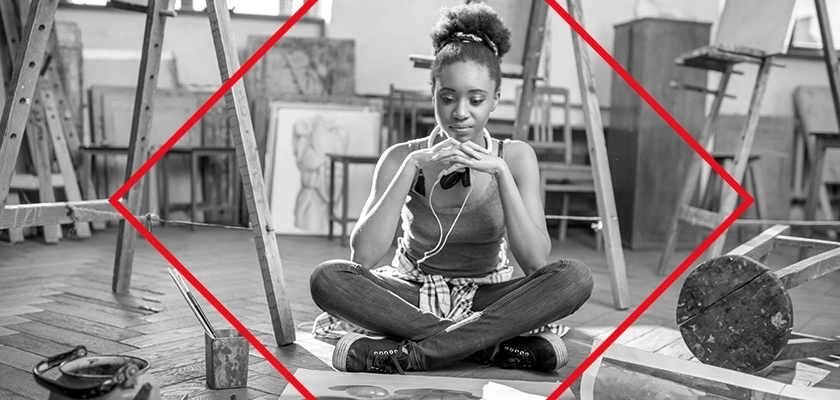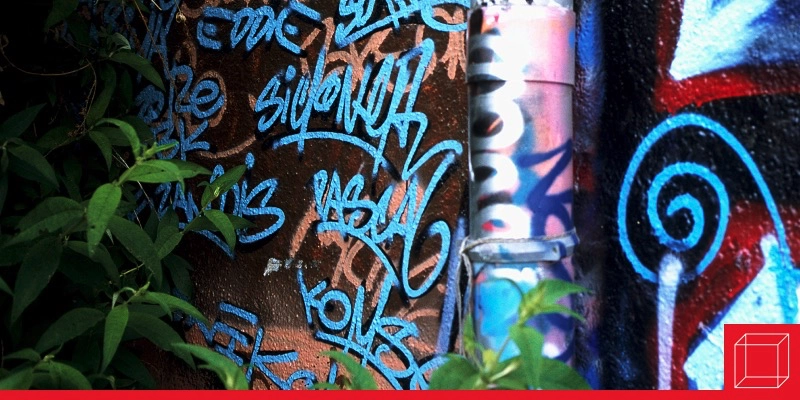Invisible Artist: Women Missing from the Canon of Art
Thinking of art history, we often immediately jump to European male artists. Women, especially Black women are often left out of the conversation.

Name a few artists from the Renaissance that you’re familiar with. Next, name a few more from the 1800s. Now, name some Modern and Contemporary artists. Beside each of your artists, list their nationality and gender. For most of you, when you go through your list and plug in gender and nationality, you’re going to notice a trend, especially if you have been trained in Western art. Each of your artists is European in origin and is male. Is this by accident? Is there some conspiracy as to why this is the case for many when they begin their journey in art history?
As feminist movements and the roles of women in general changed, artists and historians began to question why women were missing from the art historical canon. Artists like Artemisia Gentileschi and Plautilla Nelli slowly emerged. What is surprising is that many of these artists who have emerged were well known or very active in their art careers during their lifetime. Most of these artists were forgotten once they were married, reached a particular age, or died. But another question emerges: Were there any Black artists who were women?
This has not been a pressing question to examine for the larger art historical community. However, there are historians and artists who are trying to “fill in the gaps” that European art history has ignored. If artists like Artemisia Gentileschi can be found, surely women of African descent can be found. But when you search for these artists, their names only start to show up after the 1800s. They existed before this time. We see them in works of art. If we see them in works of art, then surely there were Black women creating works of art. Albert Dürer has a charcoal drawing titled “Portrait of Katharina.” We see Black women as characters in paintings like Titian’s Diana and Actaeon, and of course, there are portraits that surface here and there where a Black woman is the central subject. So, why are we not finding the artists?
Were they victims of similar fates as Artemisia Gentileschi, where they were simply forgotten and their works attributed to their male counterparts? Were their works were destroyed to erase their existence and abilities? We have to remember that women before and after the 1800s were discouraged from having careers. Art was meant to be a pastime for the economically sound, not a means of individual expression. We also have to acknowledge that for Black women, it was already difficult to enter the spaces of academia due to their race and social status. Even Black women of status found it difficult to pursue artistic careers, so imagine how it was for those of other economic statuses.
If you research the careers of Faith Ringgold or Betye Saar, both modern-contemporary artists who began their careers in the Sixties and Seventies, you find that both artists hit many roadblocks in their pursuit of a career in the arts. Like many women of that time, they had to rely on other careers or spouses, despite the recognition they garnered. They were discouraged from studying certain forms of art and pushed into other pursuits. Despite these setbacks, they continued to make art. It has only been in recent years that major museums have pursued artists like Ringgold and Saar for their permanent collections or to put on solo exhibitions. With this new interest in such artists, can we hope that historians find women of African origin from the past and fill in those gaps in the art historical timeline?
Questions for Discussion
- Were you familiar with Betye Saar or Faith Ringgold before reading this article? What about their experiences do you think may relate to the absence of women artists of African descent before the 1800s?
- Do you believe museums are responsible for our knowledge of artists? If so, why? If not, then who is responsible? Explain your answers.
- Some museums are attempting to “fill in the gaps” of their collections. How might museums diversify their collections in a meaningful way?
References
Cotter, Holland. “’It’s about Time!’ Betye Saar’s Long Climb to the Summit.” The New York Times, The New York Times, 4 Sept. 2019, www.nytimes.com/2019/09/04/arts/design/betye-saar.html.
Galitz, Kathryn Calley. “Great Women Artists.” Metmuseum.org, 16 July 2021, www.metmuseum.org/perspectives/articles/2021/7/great-women-artists.
Nancy, Nancy. “Faith Ringgold’s Art of Fearlessness and Joy.” YouTube, CBS Sunday Morning, 11 July 2021, https://www.youtube.com/watch?v=IZ-VvOep2D8.
Raicovich, Laura. “Museum Resolution: Dismantle the Myth of Neutrality.” Walker, Walker Reader, 8 June 2019, https://walkerart.org/magazine/soundboard-museum-resolutions-laura-raicovich.




